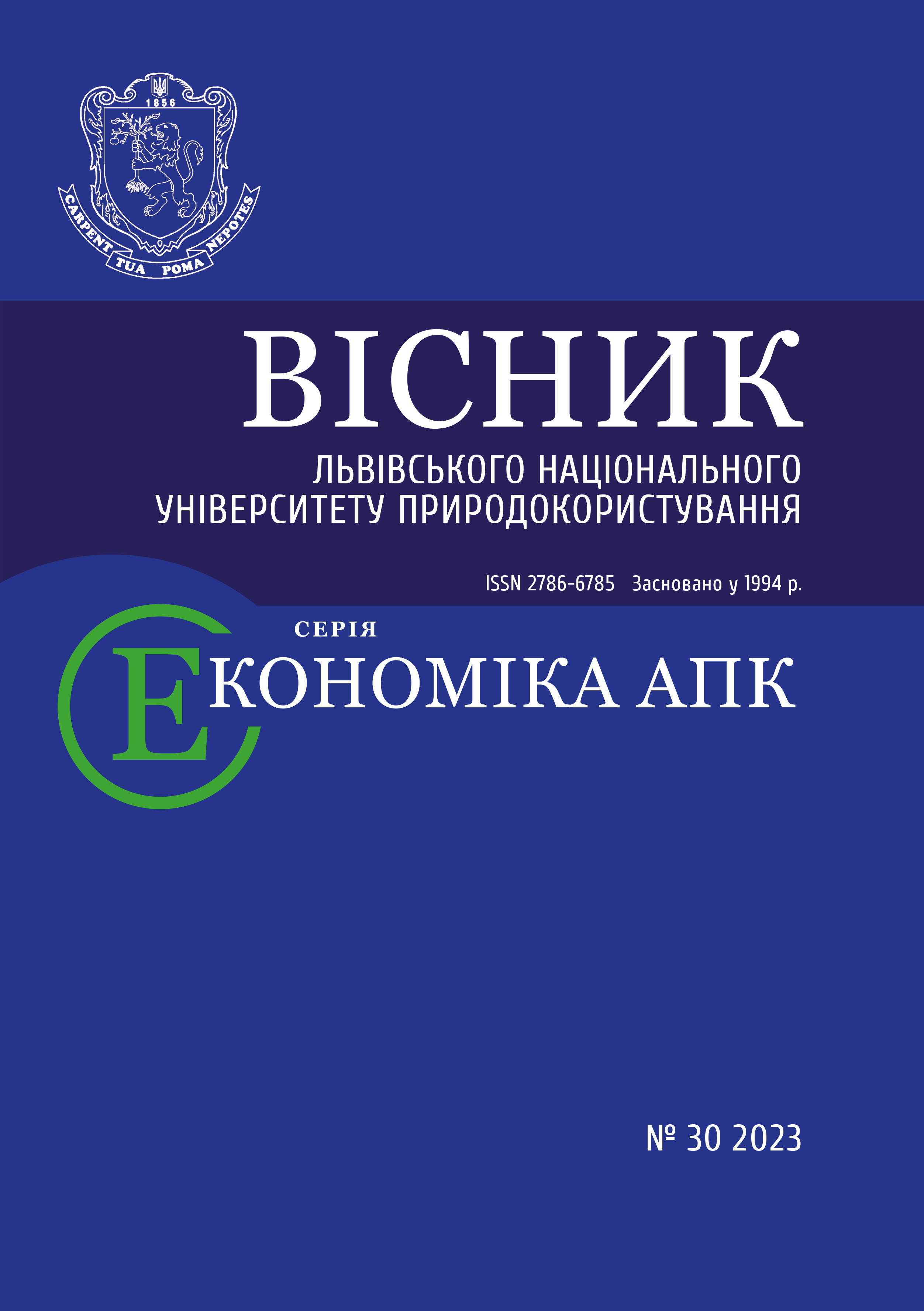TRENDS IN THE ELECTRONIC COMMERCE DEVELOPMENT
DOI:
https://doi.org/10.31734/economics2023.30.163Keywords:
e-commerce, electronic business, electronic market, Internet, online stores, marketplacesAbstract
The article is devoted to the study of the modern trends in the e-commerce development. The essence and the characteristic features of e-commerce as a new business format in the conditions of modern informatization of society are considered. The research estimates position of e-commerce in the structure of the digital economy as an effective type of business that will help to provide competitive advantages of the enterprises by reducing interaction costs, expand markets and areas of activity, penetrate the existing markets and find new sales channels, attract new customers and improve servicing of the present ones, achieve greater mobility and efficiency when making managerial decisions within a single communication system. The paper defines the main components and types of electronic trade, which ensure its functioning and growth.
The article describes conditions and dynamics of the electronic market performance in the world and in Ukraine. Data on the volume of electronic trade and sales of the most popular goods via the Internet are given. The prospects and rapid development of the Internet trade is caused by small costs for establishment and operation of enterprises, access to a significant number of potential buyers, improved information support, and automation of the majority of processes. The authors of the research identify a number of factors that negatively affect the Internet trade development, namely: low purchasing capacity of the population; low level of Internet shopping risk insurance; development of cybercrime; mistrust of product quality. A particular attention is paid to the barriers for consumers when buying on the Internet, which include doubts about the product quality; anticipation of difficulties in purchasing and returning goods; duration of product delivery; fear of fraud; problems of choosing a reliable online store and others.
The conducted studies show that at the Ukrainian Internet trade market the dominating positions are taken by the companies that use such business models as an electronic store (supermarket), a bulletin board, a marketplace and a price aggregator or their combinations. In recent years, bulletin boards and marketplaces have become the most popular.
It has been established that the potential risks of running business in the global network can be reduced by protecting virtual transactions, regulating the imperfections of the relevant legal framework at the national level. The expediency of the further growth of e-commerce in the modern conditions of society informatization is highlighted.
References
Illiashenko S. M., Ivanova T. Ye. Prospects and main problems of the Internet trade development in Ukraine. Mechanism of economic regulation. 2014. No 3. P. 72–81.
Internet trade market in Ukraine. URL: https://zet.in.ua/statistika2/rynokit/rynokinternettorgovlivukraine/ (Last accessed 01 May 2023).
Kaptsosh V. Ya. The state and peculiarities of development of the Internet commodity trade in the international scale. Scientific Bulletin of Uzhhorod National University. 2017. Iss. 13, part 1. P. 115–119.
Krehul Yu., Batrymenko V., Batrymenko V. Legal regulation of the international electronic commerce. Foreign trade: economy, finance, law. 2018. No 2. P. 136–147.
Krysha V. V., Koliesnik A. R., Hessen A. Ye. Efficiency of enterprises in the conditions of the electronic markets development. Young scientist. 2017. No 5 (45), May. P. 642–646.
Kuzheliuk A. V., Stadniuk T. V. Internet trade: implementation and accounting. Global and national economic problems. 2016. Iss. 9. P. 797–801. URL: http://global-national.in.ua/archive/9-2016/163.pdf (Last accessed 02 May 2023).
Maliuta I. A., Ohol A. Ye. Analysis of the current conditions and prospects for the Internet trade development in Ukraine. Electronic scientific publication “Efficient Economy”. 2019. No 1. URL: http://www.economy.nayka.com.ua /pdf/1_2019/51.pdf (Last accessed 31 March 2023).
Marusei T. V. Main trends in the e-commerce market development in Ukraine. Economy and society. 2018. Iss. 14. P. 1011–1015.
Matskiv H. V., Tsitska N. E., Myronchuk Z. P. Accounting and analytical support for electronic commerce in agrarian business. Economic space. 2020. No 153. P. 105–109.
Matskiv H. V. Trends of consumer behavior in the digital economy. Modern trends in the behavior of consumers of goods and services: III International Scientific and Practical Conference, February 25–26, 2022. Rivne: O. Zen, 2022. P. 214–215.
On electronic commerce: Law of Ukraine dated September 3, 2015 No 675-VIII. URL: http://zakon.rada.gov.ua/laws/show/675-19 (Last accessed 15 April 2023).
On electronic documents and electronic document circulation: Law of Ukraine dated May 22, 2003 No 851-IV. URL: https://zakon.rada.gov.ua/laws/show/851-15 (Last accessed 25 April 2023).
Piatnytska H. T., Hrygorenko O. M. B2C electronic commerce: development in the Eastern Europe, risks and effect of institutional crowding out. Management and entrepreneurship in Ukraine. 2019. Iss. 1, No 1. P. 122–130.
Skrypnyk N. E., Panasiuk T. S. Peculiarities of the Internet trade development in the global space. Eastern Europe: Economics, Business and Management. 2018. Iss. 6 (17). P. 310–316.
Syniavska O. O. E-commerce in Ukraine: trends and prospects for development. Bulletin of Karazin KhNU. Series “International relations. Economy. Local history. Tourism”. 2019. Iss. 9. P. 12–132.
Zosimov V., Berko O. Problems and prospects for the e-commerce development in Ukraine. Geometric modeling and information technologies. 2018. No 1 (5), April. P. 51–57.


